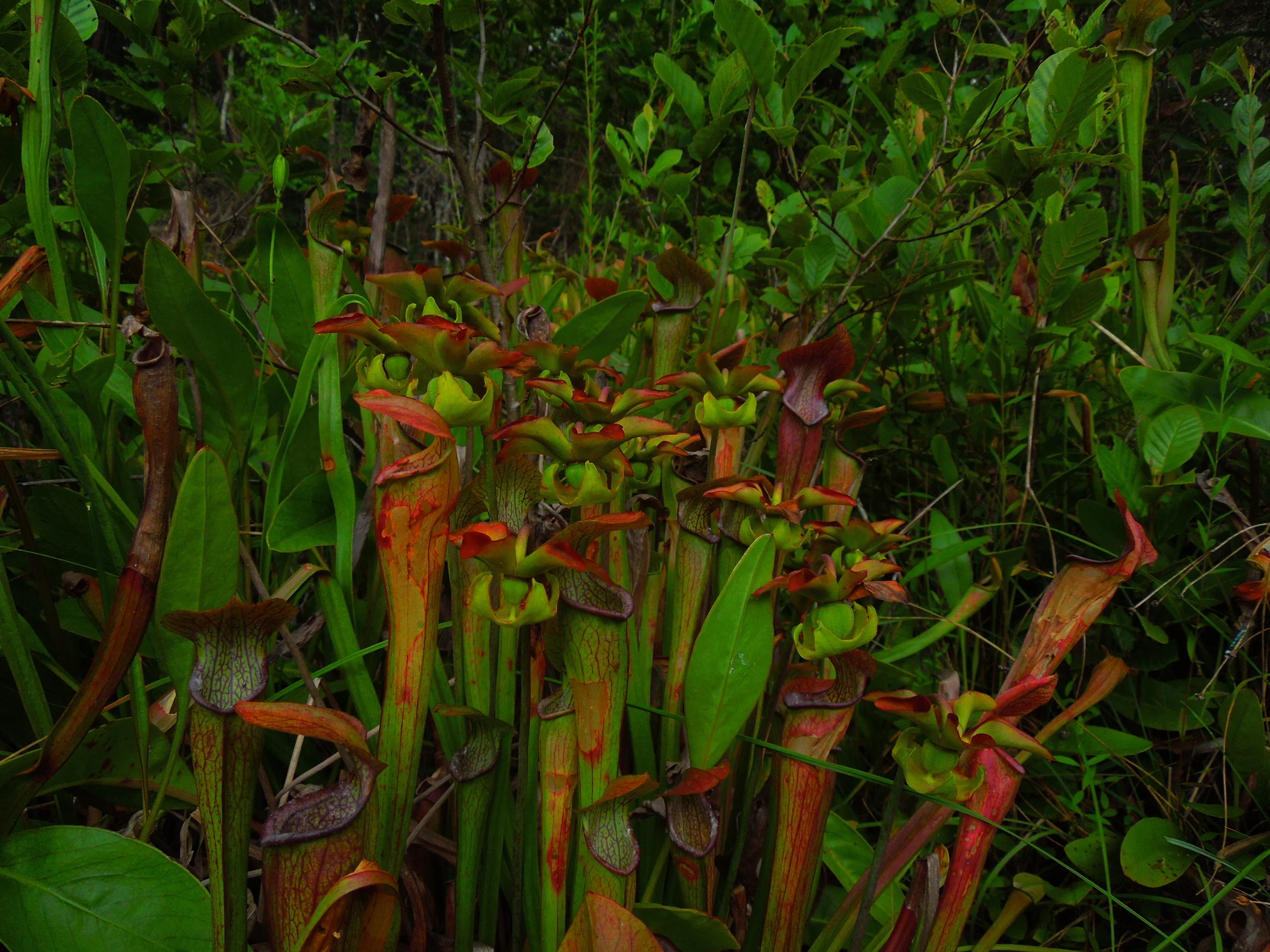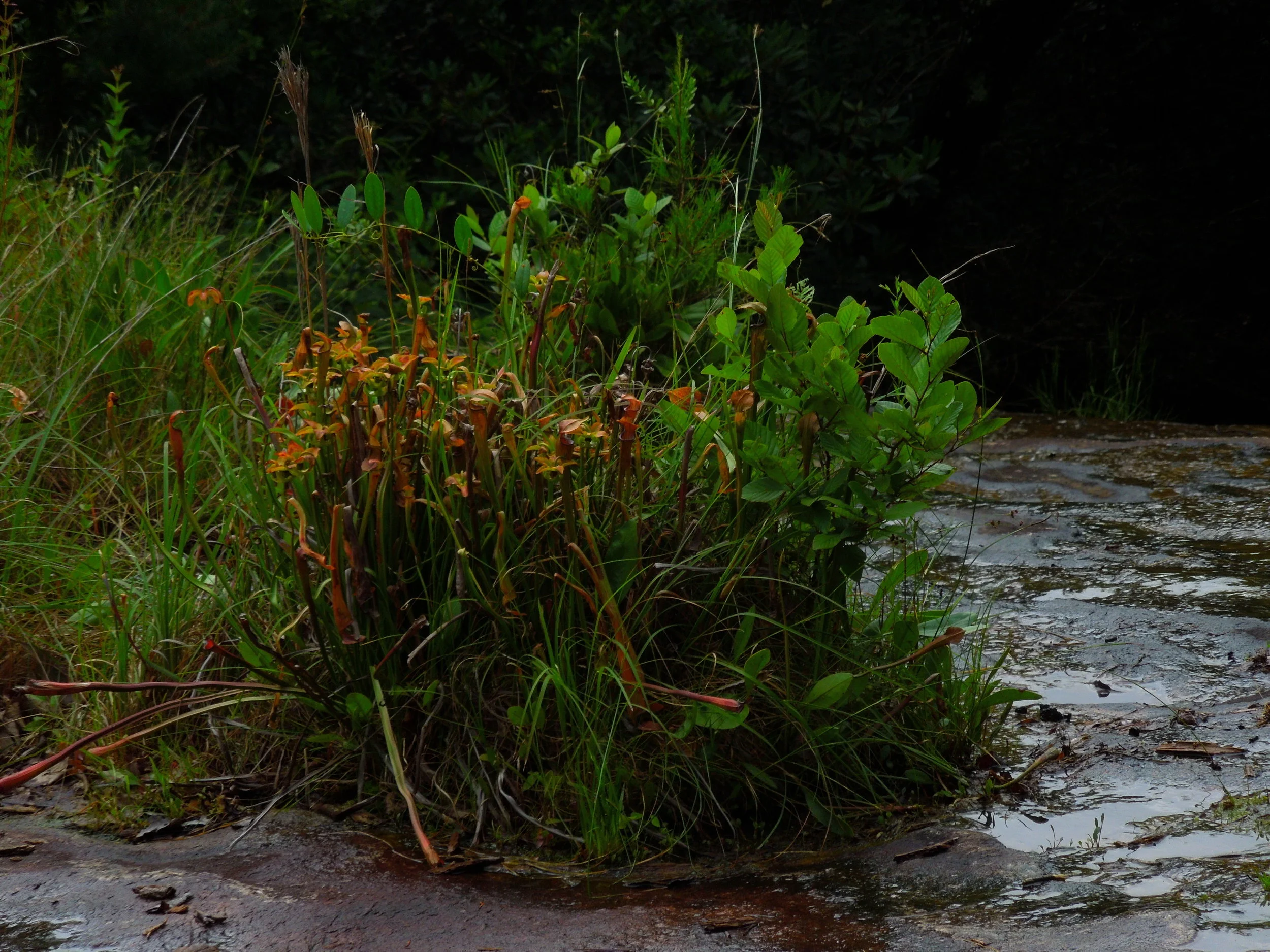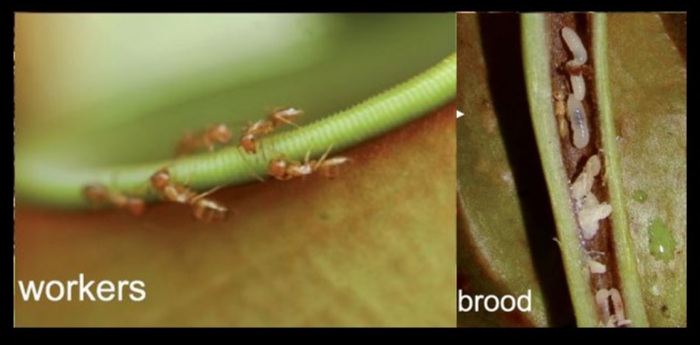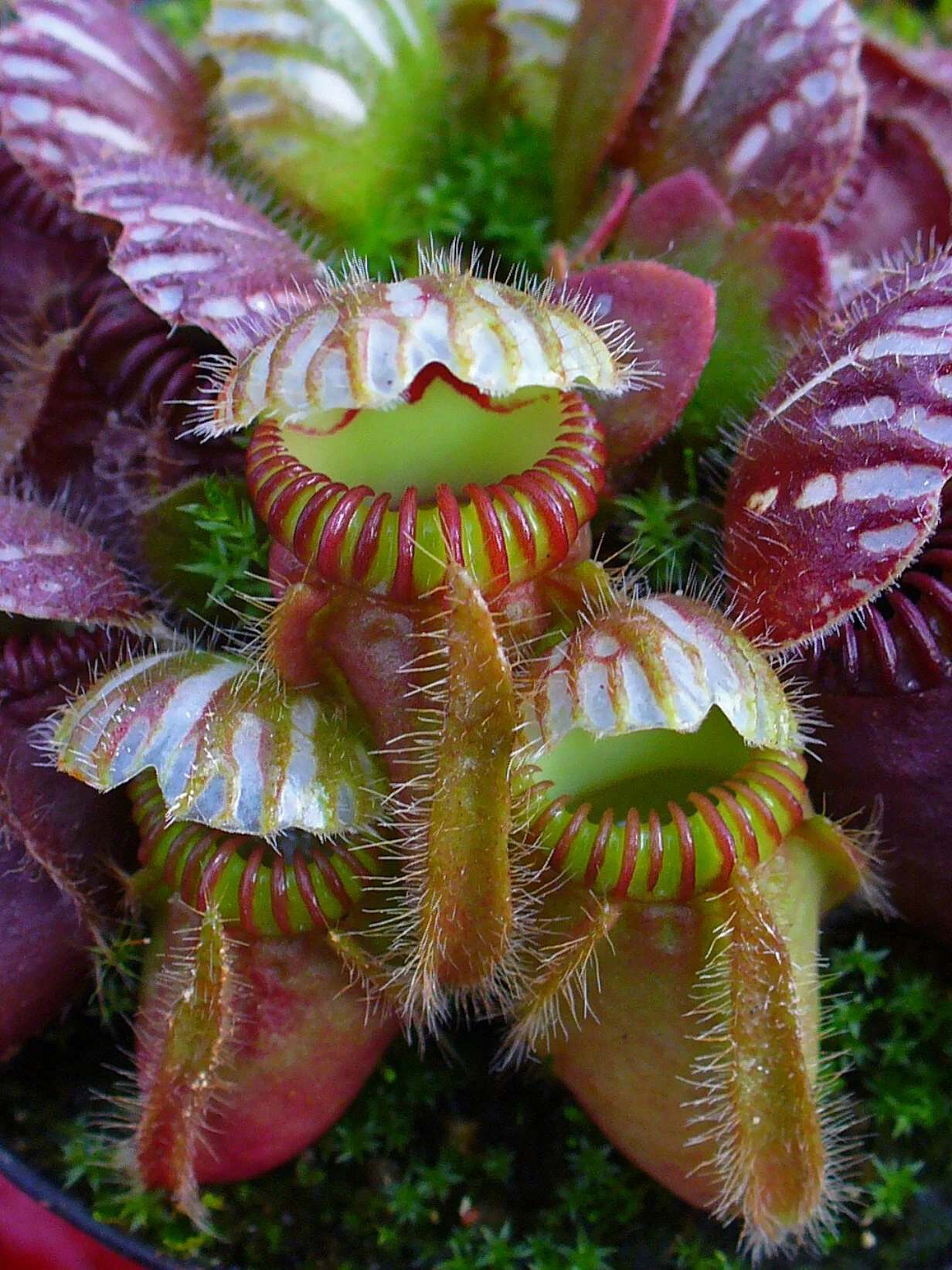I am not a list maker. Never have been and never will be. That being said, there are always going to be certain plants that I feel I need to see in the wild before I die. The white-topped pitcher plant (Sarracenia leucophylla) was one such plant.
I will never forget the first time I laid eyes on one of these plants. It was at a carnivorous plant club meeting in which the theme had been “show and tell.” Local growers were proudly showcasing select plants from their collections and it was a great introduction to many groups which, at the time, I was unfamiliar with. Such was the case for the taller pitcher plants in the genus Sarracenia. Up until that point, I had only ever encountered the squat purple pitcher plant (S. purpurea).
I rounded the corner to a row of display tables and was greeted with a line of stunning botanical pitfall traps. Nestled in among the greens, reds, and yellows was a single pot full of tremendously white, green, and red pitcher plants. I picked my jaw up off the floor and inquired. This was the first time I had seen Sarracenia leucophylla. At that point I knew I had to see such a beauty in the wild.
More like white and red top…
It would be nearly a decade before that dream came true. On my recent trip to the Florida panhandle, I learned that there may be a chance to see this species in situ. Needless to say, this plant nerd was feeling pretty ecstatic. Between survey sites, we pulled down a long road and parked our vehicle. I could tell that there was a large clearing just beyond the ditch, on the other side of the trees.
The clearing turned out to be an old logging site. Apparently the site was not damaged too severely during the process as the plant diversity was pretty impressive. We put on our boots and slogged our way down an old two track nearly knee deep in dark, tanic water. All around us we could see amazing species of Sabatia, Lycopodiella, Drosera, and so much more. We didn’t walk far before something white caught my eye.
There to the left of me was a small patch of S. leucophylla. I had a hard time keeping it together. I wanted to jump up and down, run around, and let off all of the excited energy that had built up that morning. I decided to reign it in, however, as I had to be extra careful not to trample any of the other incredible plants growing near by. It is always sad to see the complete disregard even seasoned botanists have for plants that are unlucky enough to be growing next door to a species deemed “more exciting,” but I digress.
Sarracenia leucophylla flower. Photo by Noah Elhardt licensed by GNU Free Documentation License [SOURCE]
This was truly a moment I needed to savor. I took a few pictures and then put my camera away to simply enjoyed being in the presence of such an evolutionary marvel. If you know how pitcher plants work then you will be familiar with S. leucophylla. Its brightly colored pitchers are pitfall traps. Insects lured in by the bright colors, sweet smell, and tasty extrafloral nectar eventually lose their footing and fall down into the mouth of the pitcher. Once they have passed the rim, escape is unlikely. Downward pointing hairs and slippery walls ensure that few, if any, insects can crawl back out.
What makes this species so precious (other than its amazing appearance) is just how rare it has become. Sarracenia leucophylla is a poster child for the impact humans are having on this entire ecosystem. It can only be found in a few scattered locations along the Gulf Coast of North America. The main threat to this species is, of course, loss of habitat.
A large conservation population growing ex situ at the Atlanta Botanical Garden.
Southeastern North America has seen an explosion in its human population over the last few decades and that has come at great cost to wild spaces. Destruction from human development, agriculture, and timber production have seen much of its wetland habitats disappear. What is left has been severely degraded by a loss of fire. Fires act as a sort of reset button on the vegetation dynamics of fire-prone habitats by clearing the area of vegetation. Without fires, species like S. leucophylla are quickly out-competed by more aggressive plants, especially woody shrubs like titi (Cyrilla racemiflora).
Another major threat to this species is poaching, though the main reasons may surprise you. Though S. leucophylla is a highly sought-after species by carnivorous plant growers, its ease of propagation means seed grown plants are usually readily available. That is not to say poaching for the plant trade doesn’t happen. It does and the locations of wild populations are best kept secret.
Sarracenia leucophylla habitat. Photo by Brad Adler licensed by CC BY-SA 2.5 [SOURCE]
The main issue with poaching involves the cut flower trade. Florists looking to add something exotic to their floral displays have taken to using the brightly colored pitchers of various Sarracenia species. One or two pitchers from a population probably doesn’t hurt the plants very much but reports of entire populations having their pitchers removed are not uncommon to hear about. It is important to realize that not only do the pitchers provide these plants with much-needed nutrients, they are also the main photosynthetic organs. Without them, plants will starve and die.
I think at this point my reasons for excitement are pretty obvious. Wandering around we found a handful more plants and a few even had ripening seed pods. By far the coolest part of the encounter came when I noticed a couple damaged pitchers. I bent down and noticed that they had holes chewed out of the pitcher walls and all were positioned about half way up the pitcher.
I peered down into one of these damaged pitchers and was greeted by two tiny moths. Each moth was yellow with a black head and thick black bands on each wing. A quick internet search revealed that these were very special moths indeed. What we had found was a species of moth called the pitcher plant mining moth (Exyra semicrocea).
An adult pitcher plant mining moth (Exyra semicrocea) sitting within a pitcher!
Amazingly, the lives of these moths are completely tied to the lives of the pitcher plants. Their larvae feed on nothing else. As if seeing this rare plant wasn’t incredible enough, I was witnessing such a wonderfully specific symbiotic relationship right before my very eyes.
Fortunately, the plight of S. leucophylla has not gone unnoticed by conservationists. Lots of attention is being paid to protecting remaining populations, collecting seeds, and reintroducing plants to part of their former range. For instance, it has been estimated that efforts to protect this species by the Atlanta Botanical Garden have safeguarded most of the genetic diversity that remains for S. leucophylla. Outside of direct conservation efforts, many agencies both public and private are bringing fire back into the ecology of these systems. Fires benefit so much more than S. leucophylla. They are restoring the integrity and resiliency of these biodiverse wetland habitats.
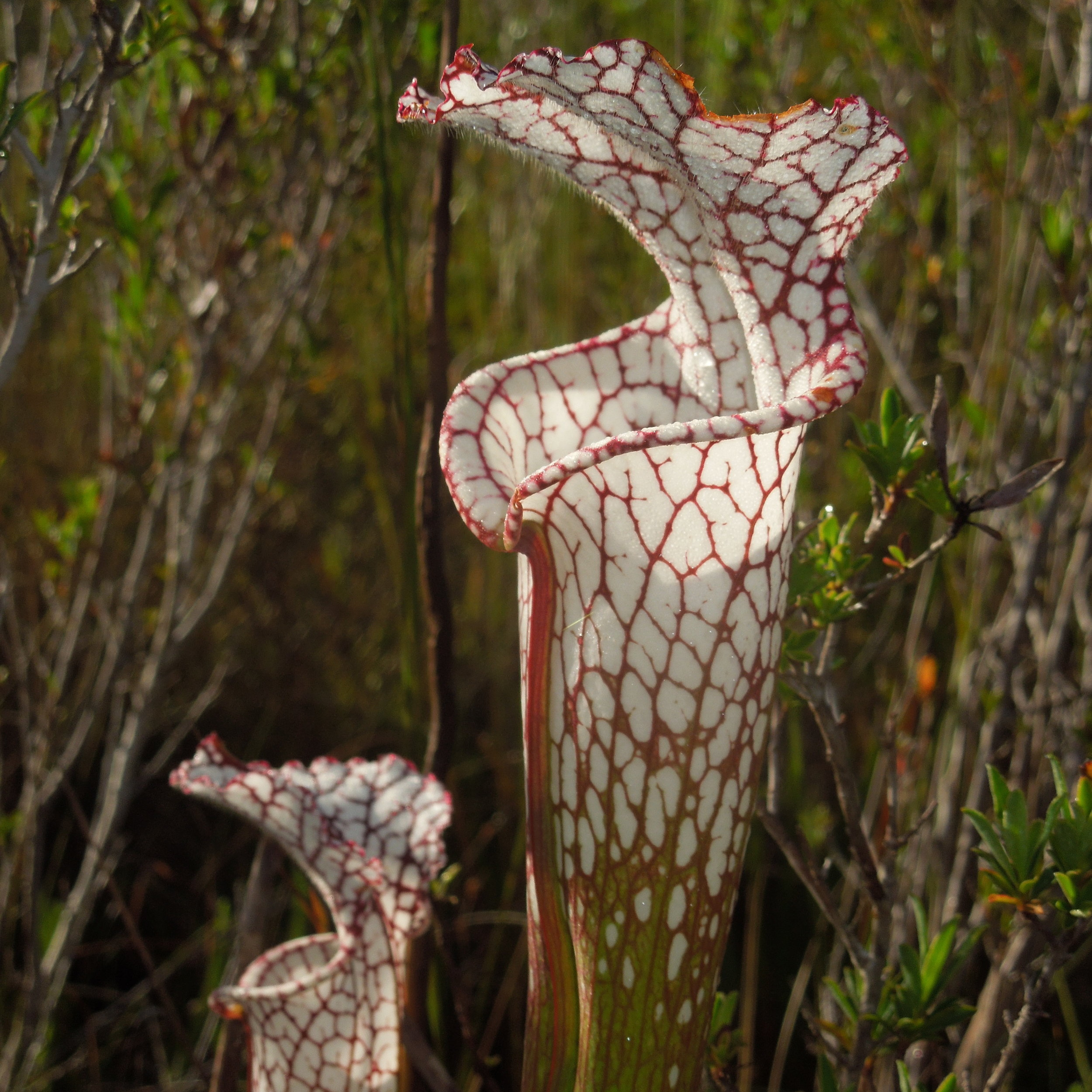
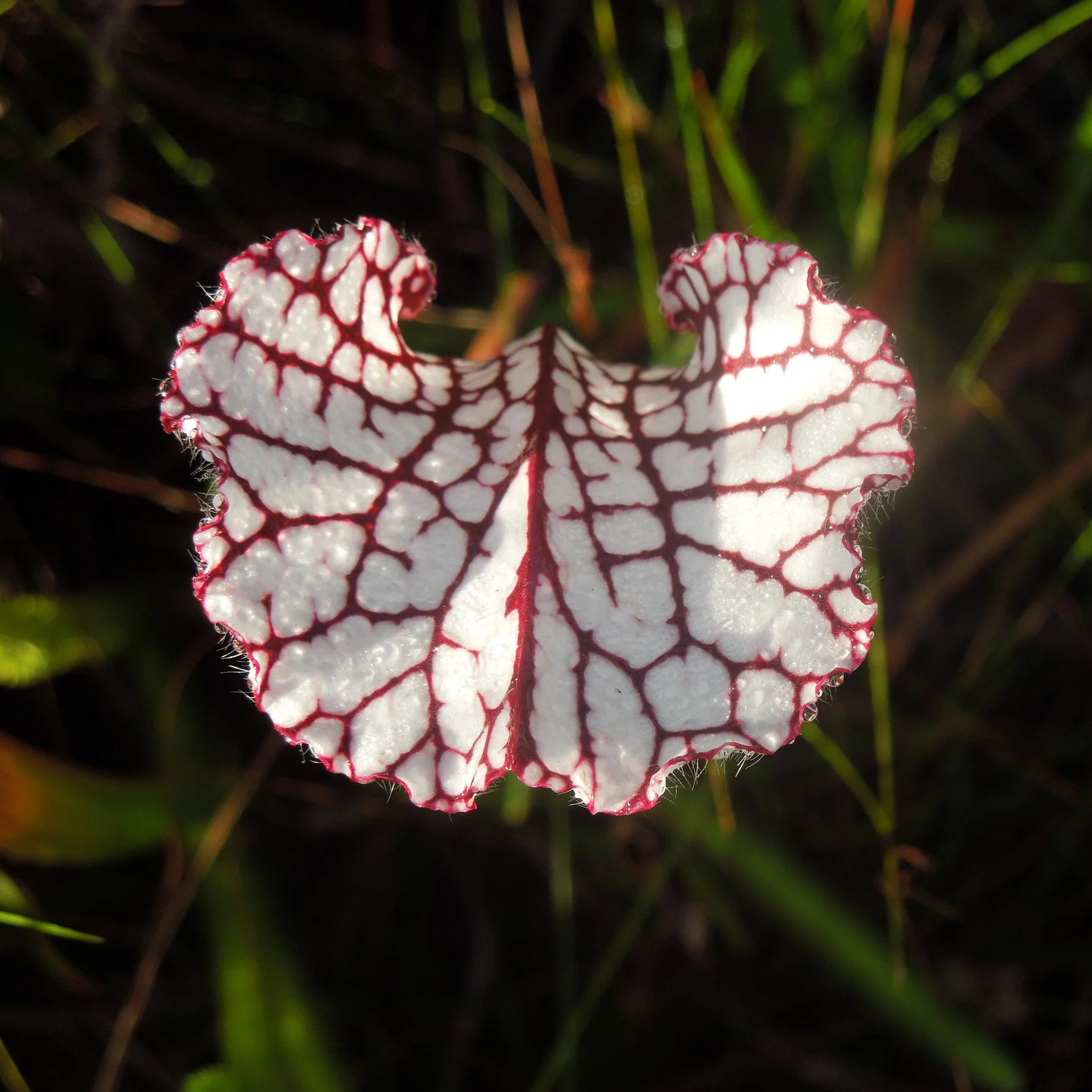
![Sarracenia leucophylla flower. Photo by Noah Elhardt licensed by GNU Free Documentation License [SOURCE]](https://images.squarespace-cdn.com/content/v1/544591e6e4b0135285aeb5b6/1567376504321-A9HVCAG8Y3DY9IMUJMGT/Sarracenia_leucophylla_flower.jpg)

![Sarracenia leucophylla habitat. Photo by Brad Adler licensed by CC BY-SA 2.5 [SOURCE]](https://images.squarespace-cdn.com/content/v1/544591e6e4b0135285aeb5b6/1567376707208-INV6TWZMXE1UXVO4DAHQ/Sarracenia_leucophylla_field.jpg)






